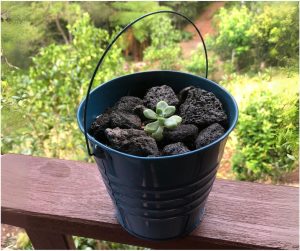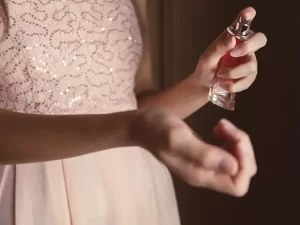Sunscreen is definitely a fact of life in Australia, especially as the weather gets warmer. Out come the the shorts and singlet tops and off we go to the pool or beach. So sunscreen is now an essential part of our lifestyle. But, do you know what it’s doing to our reefs, marine animals and most importantly… us?
Reef-safe sunscreen please!
While on our recent holiday in the Galapagos Islands the guide mentioned that they’re now looking at banning sunscreens that aren’t reef safe, in an effort to protect the coral reefs and the precious marine environment.

The state of Hawaii has already gone down this track and as of the 1st January 2021 they will ban two chemicals commonly used in sunscreens. These are oxybenzone and octinoxate, which research have linked to widespread damage to coral reefs.
Studies have shown that oxybenzone and octinoxate, which filter ultraviolet radiation and are commonly found in cream-based sunscreens, cause bleaching in coral reefs. By changing the DNA in coral cells, the chemicals cause the cells to starve and die, according to the research. As much as 6,000 tons of sunscreen a year ends up in the coral reefs in places like Hawaii, the Galapagos Islands and even our own Great Barrier Reef, according to estimates by environmental groups and the World Trade Organization.
Do you really know what you’re putting on your skin?
Some of the other guests in our group, who are not yet Young Living members, were astounded that people would actually be putting these products on their skin anyway. They asked, “If they harm coral reefs, then what harm are they doing to our bodies?”
I couldn’t agree more, but most of us don’t know what ingredients are in their sunscreens. And even if the ingredients are listed, most people don’t know what these chemicals do to our bodies or our environment. It’s great that people are aware that they need to slip, slop, slap. And that the higher the SPF rating , the better. But some of these ingredients are doing us damage, even while they’re protecting us from the sun.
It’s not only the oxybenzone and octinoxate, which are of concern. Many sunscreens contain synthetic fragrances, retinyl palmitate, parabens, phthalates, petrochemicals, PABA and 1,4 dioxane, UV chemical absorbers and synthetic colours too.
Chemical-laden cosmetics and skin care products are usually the first to cause concern, but even some naturally-derived options are questionable. In particular, you want to look out for ingredients that contain nanoparticles.
What are nanoparticles?
Nanoparticles are microscopic particles with sizes ranging from 1 to 100 nanometers. They’re so tiny, in fact, that about 100,000 nanoparticles would fit in the width of a human hair! Because of the extremely small size of these particles, their properties can be very different from the properties of larger particles of the same material. For example, nanoparticles are generally more reactive than standard-sized particles.
Why does this matter to you?
This high level of reactivity—which makes them great for science and engineering applications—may make nanoparticles unpredictable in living things. They’re not only very reactive, but they are also so small that they can actually pass through cell membranes and even enter the bloodstream. So far, few studies have been done on nanoparticle interactions within cells. The fact that particles can enter your bloodstream and reach the interior of your cells can be concerning, particularly if they can cross the blood brain barrier and get into your brain.
As more and more nanoparticle-based products enter the health and beauty markets it’s important we exercise caution. Hopefully researchers can prove the safety of these very unique materials. But until then, they’re an unknown quantity. Companies use them in sunscreens, so that you can’t see the sunscreen on your skin. Even if a product contains a natural material such as zinc oxide, it’s worth checking to see if that material is a nanomaterial. If it is, you may not want to use it. In this case, it’s better to be safe than sorry.
Fortunately, there are still plenty of mineral-based products that don’t include nanoparticles, so it’s easy to take care of yourself and your loved ones and to keep enjoying the great outdoors!
10 reasons why Young Living’s SPF 50 Mineral Sunscreen lotion is different from other brands!
- It contains no avobenzone, oxybenzone, retinyl palmitate, parabens, phthalates, petrochemicals, PABA and 1,4 dioxane, UV chemical absorbers, synthetic colours, or synthetic fragrances.
- It’s reef-safe, unlike other commercial sunscreens.
- It’s formulated with only naturally-derived plant- and mineral-based ingredients.
- It uses a non-nano particle formula, which provides a physical barrier to prevent sunburn without being absorbed into the bloodstream.
- It includes an essential oil blend of Helichrysum, Lavender, Myrrh, Cistus, Ylang Ylang, Carrot Seed, and Frankincense.
- Provides broad-spectrum protection from UVA and UVB rays.
- Water- and sweat-resistant for 80 minutes.
- Smooths easily into skin without leaving a white residue.
- Formulated for those with sensitive skin, including children and babies over 6 months.
- Dermatologist tested and hypoallergenic.
Best of all:
- It may assist in preventing some skin cancers (sunscreen)
- May reduce the risk of some skin cancers (sunscreen)
- It offers SPF 50 Broad spectrum high protection sunscreen
- Can aid in the prevention of premature skin ageing (sunscreen)
- May aid in the prevention of solar keratosis (sunscreen)
- Can aid in the prevention of sunspots (sunscreen)
Where can you get this reef-safe and human-safe sunscreen?
You can pick one up for free in the month of December with any Essential Rewards order over 250pv. So grab some gifts for your family, friends and kids teachers and you can keep the freebies. If you aren’t already a retail or wholesale member then you can order yours here.
Specific Indications Warnings
- Wear protective clothing, hats and eyewear when exposed to the sun.
- Avoid prolonged exposure in the sun.
P.S. It’s not just sunscreen that can contain chemical nasties. Do you know what’s lurking in your oral care products? Find out here.










 Subscribe to Hot Oily Mumma
Subscribe to Hot Oily Mumma